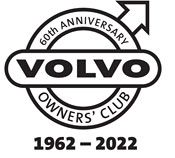
Volvo 740 760 780 940 960 V90 S90

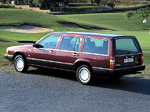
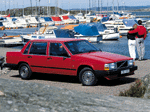
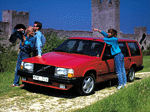
Volvo 760 Saloon
With the 760 saloon, introduced in early 1982, Volvo entered the small number of manufacturers of prestige vehicles with superior comfort and high performance levels.
The 760 were a very distinguished car, which thanks to its uncommon rather angular design offered good interior space. The safety level was superior to both previous Volvo cars and to most competitors.
The 'basic' version of the 760GLE was driven by a developed version of the French V6 engine previously used in the 260 Series, but was later supplemented by a very fast 4-cyl. Turbo version with Intercooler and with a 6-cyl. Diesel version with Intercooler which thanks to good performance and low fuel consumption offered superior comfort over long distances and an unparalleled cruising range.
The most extensive change to the 760GLE saloon took place in 1987, when the frontal appearance was changed and a unique multi-link rear axle was introduced, together with hundreds of other major changes, making this a virtually new car.
Technical Specifications
Model: 760 Sedan
Produced: 1982 - 1990
Volume: 183864
Body: 4-door saloon
Engine: 4-cylinder in-line OCH 2,316 cc or V6 2,849 cc or 2,383 cc Turbo Diesel
Transmission: 4-speed manual with electrical overdrive or 4-speed automatic
Brakes: Hydraulic, disc brakes all round
Dimensions: Overall length 478.5 cm, wheelbase 277 cm.
Volvo 760 Estate
With the 760 estate, introduced in early 1985, Volvo introduced what was virtually the finest estate car in the world.
The 'basic' version of the 760GLE estate was driven by a developed version of the French V6 engine previously used in the 260 Series, but this was supplemented by a very fast 4-cyl. Turbo version with Intercooler and with a 6-cyl. Diesel version with Intercooler which thanks to good performance and low fuel consumption offered superior comfort over long distances and an unparalleled cruising range.
The most extensive change to the 760GLE saloon took place in 1987, when the frontal appearance was changed. Unlike the saloon version, however, the 760 estate did not received the multi-link rear axle.
Technical Specifications
Model: 760 Estate
Produced: 1985 - 1990
Volume: 37445
Body: 5-door estate
Engine: 4-cylinder in-line OHC 2,316 cc or V6 OCH 2,849 cc or 2,383 cc Turbo Diesel
Transmission: 4-speed manual with electrical overdrive or 4-speed automatic
Brakes: Hydraulic, disc brakes all round
Dimensions: Overall length 478.5 cm, wheelbase 277 cm.
Volvo 740 Saloon
The highly successful Volvo 760 GLE was developed and expanded to give birth to the Volvo 740 GLE in 1984. This new Volvo model was a 4-cylinder alternative to the 760.
The Volvo 740 estate car owed its immense success primarily to factors such as its sheer reliability and renowned safety levels.
Over the years, the Volvo 740 was powered by a range of different engines, mostly 4-cylinder in-line units with or without turbochargers, and there were also 6-cylinder diesel variants.
The exterior underwent a minor facelift in autumn 1988 to carry the model into the 1989 model year.
From August 1990, the Volvo 740 was made in parallel with the 940 for two years, after which the latter took over completely from the 740.
Technical Specifications
Model: 740 Sedan
Produced: 1984 - 1992
Volume: 650443
Body: 4-door saloon
Engine: 4-cylinder in-line OHC 1,986 cc or 2,316 cc or 6-cylinder in-line 2,383 cc Diesel or Turbo Diesel
Transmission: 4-speed manual, 4-speed manual with electrical overdrive, 5-speed manual or 4-speed automatic
Brakes: Hydraulic, disc brakes all round
Dimensions: Overall length 478.5 cm, wheelbase 277 cm.
Volvo 740 Estate
The highly successful Volvo 760 GLE was developed and expanded to give birth to the Volvo 740 GLE in 1984. This new Volvo model was a 4-cylinder alternative to the 760.
The estate car version of the 740 was introduced in 1985, and was a long-awaited expansion of the range.
The Volvo 740 estate car owed its immense success primarily to factors such as its sheer reliability and renowned safety levels, and set new standards of comfort in estate cars. However, what probably made the Volvo 740 estate car one of the most sought-after cars in its segment was its unparalleled interior space and load capacity.
Over the years, the Volvo 740 was powered by a range of different engines, mostly 4-cylinder in-line units with or without turbochargers, and there were also 6-cylinder diesel variants.
The exterior underwent a minor facelift in autumn 1988 to carry the model into the 1989 model year.
From August 1990, the Volvo 740 was made in parallel with the 940 for two years, after which the latter took over completely from the 740.
Technical Specifications
Model: 740 Estate
Produced: 1985 - 1992
Volume: 358952
Body: 5-door estate
Engine: 4-cylinder in-line OHC 1,986 cc or 2,316 cc or 6-cylinder in-line 2,383 cc Diesel or Turbo Diesel
Transmission: 4-speed manual, 4-speed manual with electrical overdrive, 5-speed manual or 4-speed automatic
Brakes: Hydraulic, disc brakes all round
Dimensions: N/A
Misc: Overall length 478.5 cm, wheelbase 277 cm.
Volvo 780
When the doors to the 1985 international motor show in Geneva were thrown open to the public, the spotlight fell on an all-new Volvo model.
The Volvo 780 was an exclusive 2-door coupé. It was designed by Italian styling house Bertone, which was also responsible for production of these exceptional cars, having gained prior experience with the manufacture of the Volvo 264TE (a limousine version of the 264) and the Volvo 262C, the coupé version of Volvo's 260.
The Volvo 780 combined elegant, timeless design with a clear Volvo identity. The interior was also unique to this model, and the rear seat was individually shaped for two occupants.
In technical terms, the Volvo 780 was largely based on the 760 model.
Technical Specifications
Model: 780
Produced: 1985 - 1990
Volume: 8518
Body: 2-door
Engine: 4-cylinder in-line DOHC 1,986 cc or 2,316 cc OHC, V6 OHC 2,849 cc, or 6-cylinder in-line 2,383 cc Turbo Diesel
Transmission: 4-speed manual with electrical overdrive or 4-speed automatic
Brakes: Hydraulic, disc brakes all round
Dimensions: Overall length 479.4 cm wheelbase 277 cm
Volvo 940 Saloon
The Volvo 940/960 range was introduced in autumn 1990. The new 940 replaced the 740 which, however, remained in production as the basic 740 GL model. A 4-cylinder petrol engine or a 6-cylinder turbo-diesel powered the Volvo 940, which resembled the 960.
The Volvo 940 also launched a number of new safety features. Together with its luxury sibling the 960, a three-point inertia-reel seat belt was fitted as standard together with an adjustable head restraint in the middle of the rear seat, heralding a world breakthrough for these features. Furthermore, an integrated child seat built into the rear seat's middle armrest could be specified as an option.
These and other safety developments gained the model many international accolades, not least among them the "Prince Michael Road Safety Award" and the "Autocar & Motor" prize for the best safety features.
Technical Specifications
Model: 940 Sedan
Produced: 1990 - 1998
Volume: 246704
Body: 4-door sedan
Engine: 4-cylinder in-line OHC unit, 1,986 cc, 88.9 x 80 mm; 4-cylinder in-line OHC unit 2,316 cc with/ without turbocharger, and 6-cylinder in-line OHC 2,383 cc Turbo-Diesel
Transmission: 4-speed manual with overdrive or 5-speed manual or 4-speed automatic
Brakes: Hydraulic, all-round disc brakes
Dimensions: Overall length 487 cm, Wheelbase 277 cm.
Volvo 940 Estate
The Volvo 940/960 range was introduced in autumn 1990. The new 940 replaced the 740 which, however, remained in production as the basic 740 GL model. A 4-cylinder petrol engine or a 6-cylinder turbo-diesel powered the Volvo 940, which resembled the 960.
Volvo being already by that time a leading manufacturer of comfortable estate cars, it was natural to include a 940 estate car in the product programme. The 940 estate almost became as legendary as the predecessor 245/240 estate, not least being the last rear-wheel drive Volvo model (together with the S90/V90 series).
The 940 estate was very similar to the 960 estate, but provided comfortable and safe estate car motoring 'for the masses', being the successor to cars like the Duett, the P220 'Amazon Estate car', the 145, the 245/240 Estate and the 740 Estate.
Technical Specifications
Model: 940 Estate
Produced: 1990 - 1998
Volume: 231677
Body: 5-door estate
Engine: 4-cylinder in-line OHC unit, 1,986 cc, 88.9 x 80 mm; 4-cylinder in-line OHC unit 2,316 cc with/ without turbocharger, and 6-cylinder in-line OHC 2,383 cc Turbo-Diesel.
Transmission: 4-speed manual with overdrive or 5-speed manual or 4-speed automatic
Brakes: Hydraulic, all-round disc brakes
Dimensions: Wheelbase 277 cm
Volvo 960 Saloon
Autumn 1990 saw the launch of the Volvo 960, in time for the 1991 model year. The new Volvo 960 replaced the outgoing Volvo 760, which had been on the market since 1982.
The Volvo 960 was powered by an all-new in-line 6-cylinder engine, with a displacement of 3 litres. It was an advanced power unit featuring an aluminium cylinder block and double overhead camshafts allied to 4 valves per cylinder. This engine represented the first stage in an entirely new generation of in-line engines, which eventually extended into the creation of a new series of 5-cylinder and 4-cylinder Volvo engines.
For the Volvo 960 a number of new safety features was also unveiled, among them a three-point inertia reel seatbelt and an adjustable head restraint for the middle of the rear seat. Further enhancing the new car's safety profile, an integrated child seat built into the rear seat's middle armrest could be specified as an optional extra.
These and other safety developments gained the model considerable international accolade, not least among them the "Prince Michael Road Safety Award" and the "Autocar & Motor" prize for the best safety features.
For model year 1995, the Volvo 960 underwent a comprehensive redesign. The front was given a new appearance; the chassis was almost totally new, including a further developed version of the multi-link rear suspension with a transversely mounted leaf spring of composite material. A new 2.5 litre version of the 6-cylinder engine supplemented the previous 3-litre version.
In 1997, the Volvo S90 replaced the 960 Sedan.
Technical Specifications
Model: 960 Sedan
Produced: 1990 - 1997
Volume: 112710
Body: 4-door sedan
Engine: 6-cylinder in-line DOHC unit, 2,473 cc or 2,922 cc
Transmission: 5-speed manual or 4-speed automatic
Brakes: Hydraulic, all-round disc brakes
Dimensions: Overall length 487 cm Wheelbase 277 cm
Volvo 960 Estate
The Volvo 960 Estate was introduced in the autumn of 1990 together with a number of new models for model year 1991. The Volvo 960 Estate carried over the tradition of 6-cylinder estate models in the Volvo programme from the 760.
This new 960 Estate was the natural choice for descerning customers who wanted a car offering a unique combination of comfort, safety, ergonomics, space and versatility, a combination much appreciated by drivers and passengers interested in activities like golf, sailing or hunting.
Model year 1995 saw the 960 Estate undergo a comprehensive redesign. The face-lift to the front gave a fresh appearance. Under the skin, the chassis was almost completely new, and a 2.5 litre version of the 6-cylinder engine was added to the previous 3-litre.
Another important new feature for the Volvo 960 Estate for 1995 was the introduction of the latest generation of advanced individual multi-link rear suspension, adding to comfort and road holding properties.
The end for the Volvo 960 Estate came in model year 1997, when the replacement Volvo V90 was introduced.
Technical Specifications
Model: 960 Estate
Produced: 1990 - 1997
Volume: 41619
Body: 5-door Estate
Engine: 6-cylinder in-line DOHC unit, 2,473 cc or 2,922 cc
Transmission: 5-speed manual or 4-speed automatic
Brakes: Hydraulic, all-round disc brakes
Dimensions: Overall length 487 cm Wheelbase 277 cm
Volvo V90 Estate
Volvo V90 Estate was introduced during the model year 1997 as a replacement for the Volvo 960 Estate.
When we compare the two models, we only find minor differences. Among the new features on the V90 were some new interior and exterior colours. It was more a question of bringing these models into line with the new model-name strategy first introduced in 1995 with the Volvo S40 and V40.
In 1998 production of Volvo V90 was discontinued.
Technical Specifications
Model: V90
Produced: 1997 - 1998
Volume: 9067
Body: 5-door sestate
Engine: 6-cylinder in-line DOHC unit, 2,473 cc or 2,922 cc
Transmission: 5-speed manual or 4-speed automatic
Brakes: Hydraulic, all-round disc brakes
Dimensions: Overall length 487 cm Wheelbase 277 cm
Volvo S90 Saloon
The Volvo S90 Sedan appeared on the market during model year 1997 as a replacement for the Volvo 960 Sedan.
A comparison between the two models will show only minor differences. Among the new features were some new interior and exterior colours. It was more a question of bringing these models into line with the new model-name strategy first introduced in 1995 with Volvo S40 and V40.
In 1998 production of Volvo S90 was discontinued.
Technical Specifications
Model: S90
Produced: 1997 - 1998
Volume: 26269
Body: 4-door Sedan
Engine: 6-cylinder in-line DOHC unit, 2,473 cc or 2,922 cc
Transmission: 5-speed manual or 4-speed automatic
Brakes: Hydraulic, all-round disc brakes
Dimensions: Overall length 487 cm Wheelbase 277 cm
Source: Volvo Car Corporation.
FAQ for 700/900/90 Created by the Volvo Club of America, now available on this web site also.
Register Keeper's reports. This page contains a series of articles of technical and general interest by the club official who specialises in this particular Volvo.
Profile on the Volvo 700 An article outlining the history of the 700 Series Volvo
Living with a Volvo 740 An article outlining the day to day running of this model and its care and maintenance
740 Fuel Injection Systems Diagrams of the various systems used. Taken from the Volvo manual published 1989
40/960 Repair and Maintenance Volvo documents and diagrams on repair and maintenance.
The S90/V90 Information on the S90/V90 Series Volvo
Volvo Brochures These contain technical and general specifications.
Crossmember cracks and chafing battery leads Technical information on 700/900
262C/780 Dutch Club Site Web site of the Dutch 262C and 780 Club. All the information you wanted on these 2 wonderful Volvo cars. There is also an online register for both models.
Injection Relay problem Cause and cure for burnt out relays
Buying a used 940/960 Some useful tips
Replacing valve guides on 960 and 90 models Revised Volvo procedure
Dutch/Belgium Volvo 700 Vereniging Web site dedicated to the 700/900/90 Series Volvo
Superchips Improve the performance of your car with a new ECU chip.
960 Specifications October 1994
960 - 1992 model year information Document date: October 1991
960 Press Release Document date: October 1991
960 - Engine and Gearbox information Document date: October 1991
1998 specifications for the S90 and V90 Issued August 1997
760GLE Limousine Press Release (PDF)
700 Series Engines and Safety Press Release (PDF)
760 Press Release 1988 (PDF)
1992 model year information Document date: October 1991 (PDF)
SIPS Document date: October 1991 (PDF)
1992 model year specifications Document date: October 1991 (PDF)
Turning 25. The Volvo 760. The car that formed the foundation for the modern Volvo Car Corporation. 6 February 2007
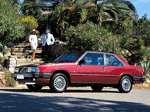

Legal | Privacy | Contact Us | Search | Site Map
Volvo Owners' Club Limited® 1962-2024



